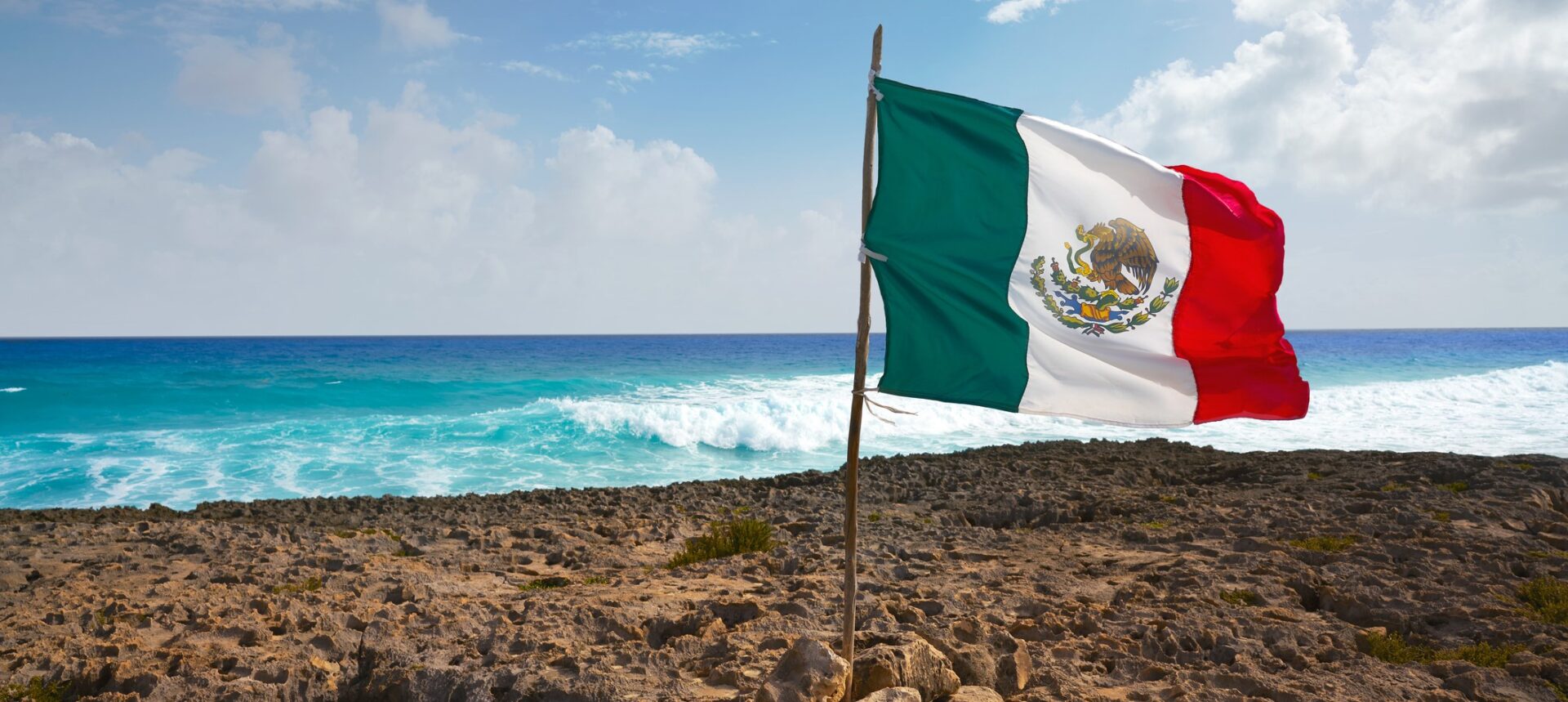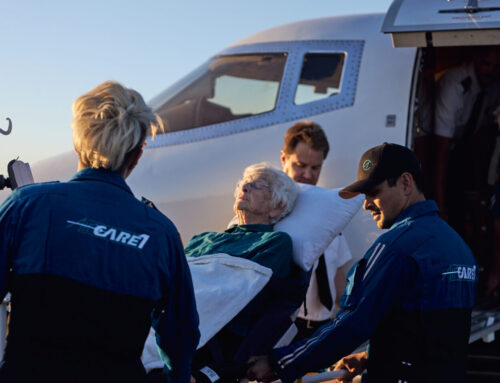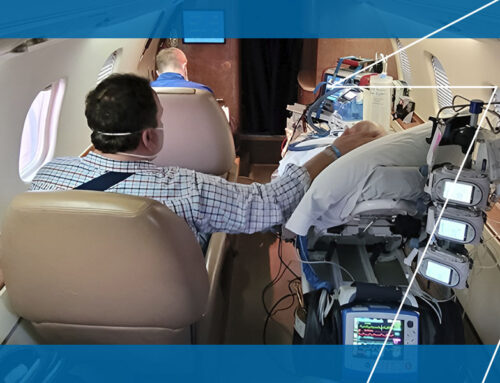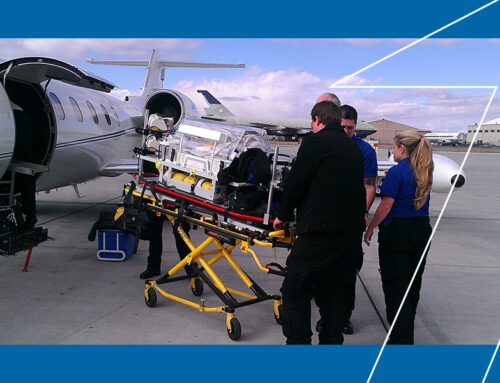How To Deal with a Medical Emergency in Mexico
No one travels on vacation anticipating something terrible to happen, but no matter where you’re traveling, you must always be ready to handle a medical emergency. Specifically, dealing with a medical emergency while in Mexico brings its own unique challenges. If such an emergency arises and time is of the utmost importance, here are a few things you should understand and take into consideration if you become critically injured or severely ill while in Mexico.
Jump To: Pay Upfront | Language Barrier | Lack of Qualification | Evacuation Difficulties | Travel Tips
1. Medical Care In Mexico Is Subpar
Mexico’s health ranking is significantly below average, and the quality of medical care varies greatly depending upon location, type of medical facility, and level of training. A severe shortage of hospitals is apparent in Mexico which makes it difficult for them to provide adequate care and accurately manage illnesses. In general, hospitals located close to major tourist attractions tend to offer higher levels of service than those located in rural areas. In addition, facilities with a greater number of doctors and nurses are considered to provide superior service.
Facilities in Mexico are often overcrowded and understaffed. Patients can wait for hours or days before they receive treatment, especially if they cannot pay the high fees charged at private clinics.
Consider registering with the International Association for Medical Assistance to Travelers (IAMAT) – IAMAT maintains lists of licensed physicians and hospitals willing to treat foreign nationals upon presentation of proof of medical insurance. IAMAT does not charge for its services.
2. Mexico Hospitals May Demand Payment Up Front, And Bill You Afterwards
Suppose you have a medical emergency in Mexico and get yourself (or the patient) to the best medical facility in the area. Great first step! However, now you will have to tackle some other challenges that can arise when visiting a hospital in Mexico.
Once you enter a hospital or emergency department in Mexico you will typically be required to sign a release of legal redress. Pay attention to details about the paperwork you receive, whether there is a signature line for you or your insurance company. Ask questions about how much of your insurance payment goes towards your actual costs of treatment. You can usually find out if your insurance covers certain procedures by asking your doctor.
Additionally, most hospitals require payment upfront and/or frequently request advanced payments or deposits before care has been completed. When not life threatening, try to ask about the charges before receiving any treatments. If you don’t understand the bill, talk to the hospital directly to find out what they charge for their services.
If you do find yourself receiving medical treatment, know that medical insurance providers rarely cover all costs for medical procedures, if at all. In fact, most private insurers in the US, including Medicare and Medicaid, generally do not cover services provided outside the country. You’re going to need cash to pay for any services that are not covered. If you don’t have enough money upfront, you could end up paying the bill later with a huge interest rate. The hospital can even call your credit card company once they receive your bill and charge them directly.
It is recommended to get Travel Insurance for instances like these. Travelers with certain types of travel insurance may qualify for reimbursement under the Foreign Travel Rule. Other travel insurance policies may cover only emergency treatment. Review your travel insurance policy in detail before travelling to Mexico.
Asking for a factura—a unique receipt meant for repayment—is crucial if you have insurance and wish to request reimbursement for your payment. You must settle your account and get reimbursement from your domestic insurance when you go home. Make sure you demand complete records of your care from the hospital or doctor in Mexico to be able to do this.
Know Your Rights Within A Mexico Medical Facilities
There are several rights that patients should know while staying in a Mexican hospital. First, you cannot be legally imprisoned against your will if you are admitted to a hospital in Mexico and cannot pay the medical cost upfront. Ask for the name and telephone number of the local consulate – Consular officers can assist visitors who require emergency medical attention to obtain proper medical records and insurance coverage and provide advice about financial protection and repatriation.
Additionally, you should have the same right to refuse medication as you would at home. You should be able to always receive information regarding your condition and treatment options. You should always have access to emergency procedures and equipment. If you feel like you are being treated unfairly, ask to speak with a supervisor.
3. The Language Barrier in Mexico Can Obstruct Medical Care
Mexico is home to 85 distinct native languages, according to the National Institute of Statistics and Geography (INEGI). The Spanish you study in a classroom in the United States, Mexico, or on some costly Spanish language application will not be the Spanish you encounter in the streets of Mexico! Mexicans don’t communicate as you would in a formal classroom; they speak differently in everyday situations. Many Mexicans who are out and about talk colloquially.
The everyday “street Spanish” is so riddled with idioms that you may not be able to understand much of it if anything at all! You will recognize some of the words and phrases you hear, but you won’t be able to comprehend them in the context that they are used.
Language Barriers In Mexico Can Have Several Undesirable Consequences, Including:
- Delay in receiving life-saving treatment
- A misperception of the patient’s medical condition
- Complications due to concerns that were ignored or only partially handled
- Incorrect prescription being given to the patient, either in terms of kind or dosage
Therefore, it can be challenging in a place with a language and cultural differences. Simple everyday life can be challenging. You wouldn’t be able to inform the medical personnel of any symptoms you were feeling or any further problems you could have that they should be aware of before treating you. These kinds of nightmare scenarios happen every day.
Unfortunately, if there is a medical emergency, the language and cultural differences can make a difference in someone surviving, attaining the care they need, or succumbing to life-threatening injuries.
Here Are Some Suggestions for Overcoming Language Barriers in a Medical Emergency:
- Pay attention to your posture
- Make a note
- Maintain an optimistic outlook
- Engage in language-exchange activities
- Take note of visual clues
- Be flexible
- Google translations
4. Rural Areas In Mexico Lack Medical Facilities And Qualified Staff
Provincial Mexico’s rural and semi-rural areas have fewer local services, including grocery stores, markets, entertainment venues, financial institutions, dentists, and physicians. More importantly, health facilities are few in the rural communities in Mexico. In an emergency, rural locations can provide challenges. Rural roads are frequently slower to travel on, and if time is of the essence, Rural roads may postpone your trip to the closest hospital.
You should be careful where you choose to stay in Mexico if you have a health condition that may require immediate medical services. Unfortunately, the availability of physicians, clinics, and hospitals tends to be deficient in rural communities. Small towns and villages may only have, at most, a single, modest local clinic with minimal services.
Most foreign immigrants who reside in remote (or semi-rural) towns and villages in Mexico travel to the closest big city or town for standard medical services.
5. Medical Evacuation From Mexico Can Be Challenging
Medical evacuation may be necessary when someone experiences a severe accident, cardiac episode, or other significant damage. Sometimes immediate transport is necessary for life saving care at a specialized hospital. However, it is more likely patients are transported back to their home country’s local hospital for ongoing medical care after their condition has stabilized locally. Continued treatment is best provided at a hospital close to the patient’s family or where their primary insurance plan would pay for it.
An air medical transport includes a dual piloted air ambulance aircraft equipped with hospital grade medical equipment and a 2-person medical crew to provide appropriate medical care during transport. Read more details about air ambulance services on our website.
Obtain Comprehensive Medical / Travel Insurance
It is highly recommended that you get comprehensive travel insurance before leaving on any vacation, especially to Mexico. Your travel insurance can cover all out-of-country medical expenses, including medical evacuation or repatriation, repatriation of remains, and legal fees. Check for any exclusions and confirm that your travel insurance covers the activities you plan to engage in.
When medical evacuation or repatriation is included in your travel insurance plan, the assist company will handle everything for you from choosing the best air ambulance provider to handling all communication and service costs. A premier-level policy ensures everything is taken care of on your behalf, and all costs are covered without deductibles or out-of-pocket expenses for your medical flight.
If you don’t have medical evacuation services included in your travel insurance plan, you’ll need to contact the air ambulance providers who specialize in medical transports and pay upfront for any necessary services. When using an air ambulance to return from Mexico to the U.S. or Canada, these costs often vary from US$25,000 to US$75,000 depending on the receiving location.
Logistics Of Medical Evacuation Out Of Mexico
Medical evacuation is logistically complex and goes far beyond the arrangement of a private flight home. Managing a transport includes pre-flight patient evaluation & risk assessment, arrangement of ground transport for the pick-up in Mexico, and subsequent transfers in the medical facilities at the foreign destination. The intricacy of a medical transport requires the right team and experience.
Specifically in Mexico, the Air Ambulance provider has to secure Mexico flight permits, comply with customs and immigration requirements, take care of all the upfront payments along the route, and coordinate with local doctors and healthcare facilities across borders (sometimes in different languages). These steps are all crucial for a medical transport in Mexico to go well.
Mexico Permits Are Necessary To Transport Patients
Mexico is a challenging country to enter, and you must have adequate permissions, proper permits, equipment, etc. The Civil Aviation Federal Agency (AFAC) in Mexico is the government body responsible for regulating the civil aviation sector in Mexico, which was once called the Directorate General of Civil Aeronautics (Dirección General de Aeronáutica Civil, DGAC). Its primary responsibilities are acting as a civil aviation authority (CAA) and investigating aviation accidents and incidents in Mexico.
Learn about the few available Air Ambulance providers to transport you out of Mexico. AirCARE1 has special authorization from the Civil Aviation Authority in Mexico to operate in and out of the country utilizing a blanket permit. This permit, requiring special equipment on the aircraft, allows AirCARE1 easy and quick entry into Mexico. Unfortunately, most U.S. air ambulance operators cannot obtain this permit, which could delay reaching the patient in time.
Having a blanket permit means AirCARE1 can launch into Mexico to transport a patient out of the country in a matter of hours that otherwise could take days for those providers without a permit. AirCARE1’s mission is to transport patients out of Mexico and back to the United States or Canada as quickly as possible so they can start the recovery process.
Know Where the U.S. Embassy is Located in Mexico
Have the contact information for citizen help and American consulates in Mexico accessible. Furthermore, know the location of which consulate is the nearest to your site. They may be able to give you advice on how to deal with your emergency.
6. Travel Tips Before You Leave For Mexico
Share Your Plans
Share your itinerary with your household’s family and friends. You don’t have to tell them everything you do, but you should at least let them know where you’ll be. Regularly check in with them to ensure that everyone knows your whereabouts in case something happens to you.
Copy Important Documents
Leave your passport in the hotel safe whenever you can and keep a copy with you. Additionally, scan your documents and email them to yourself so that, in case of emergency, you may access them online.
Purchase Health and Travel Insurance
Get the travel insurance plan that best suits your needs. For example, suppose you have a medical condition, plan to engage in adventurous activities, or visit destinations far from major cities or popular tourist attractions. In these cases, it would be wise to purchase medical evacuation coverage.
Register Your Trip
If you want to stay more than a few days in Mexico, register your trip with your consulate before you leave so that they can keep you updated and assist you in repatriation in the event of bad weather or a political uprising.




